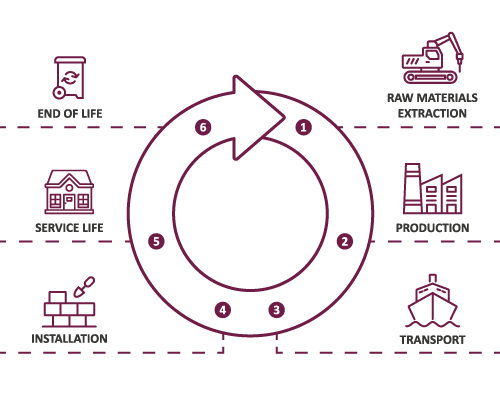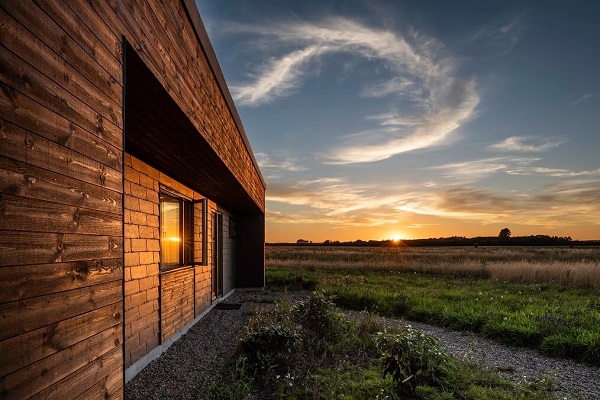Slate, the most sustainable choice
Natural slate is the most sustainable product ever for roofs and façades. It is shaped by nature for millenniums until it acquires the properties that no artificial product can imitate.
From the quarry to its final destinion, natural slate goes through a simple production process where no chemical products or industrial combustions are employed.
Our natural slates have a lifetime of at least one hundred years. If they are damaged due to external factors, all CUPA PIZARRAS products allow a partial replacement that save costs and avoid creating waste.
Environmental benchmark
During the production process, natural slate requires less water, consumes less energy and pollutes less than any other alternative roofing product, like fibre cement, zinc or clay.
Natural slate (x1)
Fibre cement (x11)
Zinc (x135)
Clay (x2)
Natural slate (x1)
Fibre cement (x6)
Zinc (x4)
Clay (x2)
Natural slate (x1)
Fibre cement (x6)
Zinc (x4)
Clay (x2)
CUPACLAD® Sustainables facades
CUPACLAD® systems enable the construction of efficient, sustainable rainscreen cladding.
A life cycle analysis, which allows you to analyse the overall environmental impact of a product, confirms CUPACLAD® as the ecological option for facade cladding, thanks to the use of natural slate instead of prefabricated products
CUPACLAD® rainscreen cladding systems are made from 100% natural slate.
CUPACLAD® slate (x1)
Fibre cement (x18)
Zinc (x324)
Clay (x20)
CUPACLAD® slate (x1)
Fibre cement (x7)
Zinc (x9)
Clay (x10)
CUPACLAD® slate (x1)
Fibre cement (x5)
Zinc (x9)
Clay (x8)
*Comparison carried out based on the information published by the French database INIES on September 2014: http://www.base-inies.fr/Inies/Consultation.aspx
The study includes the analysis of the various stages in the life of the product: production, transport, installation, use and maintenance and end of life (“from cradle to grave”), for 1 m2 of facade and one year.
Product life cycle
Life Cycle Assessment (LCA), which allows you to analyse a product’s overall environmental impact, confirms natural slate as an ecological option for any architectural project.
The natural slate Environmental Product Declaration (EPD), which has been renewed until 2026, certifies its low environmental impact during the whole natural slate life cycle, providing objective, quantified and verifiable information.

Inert, ecological and healthy material
Natural slate is an inert, healthy and nontoxic product. It has been created by nature and when using it as a construction material, there is no need for chemical products, during both the transformation process and installation.
The independent database Inventory of Carbon and Energy (ICE, University of Bath), highlights natural slate as the material with the lowest number of adverse impacts on the environment.

